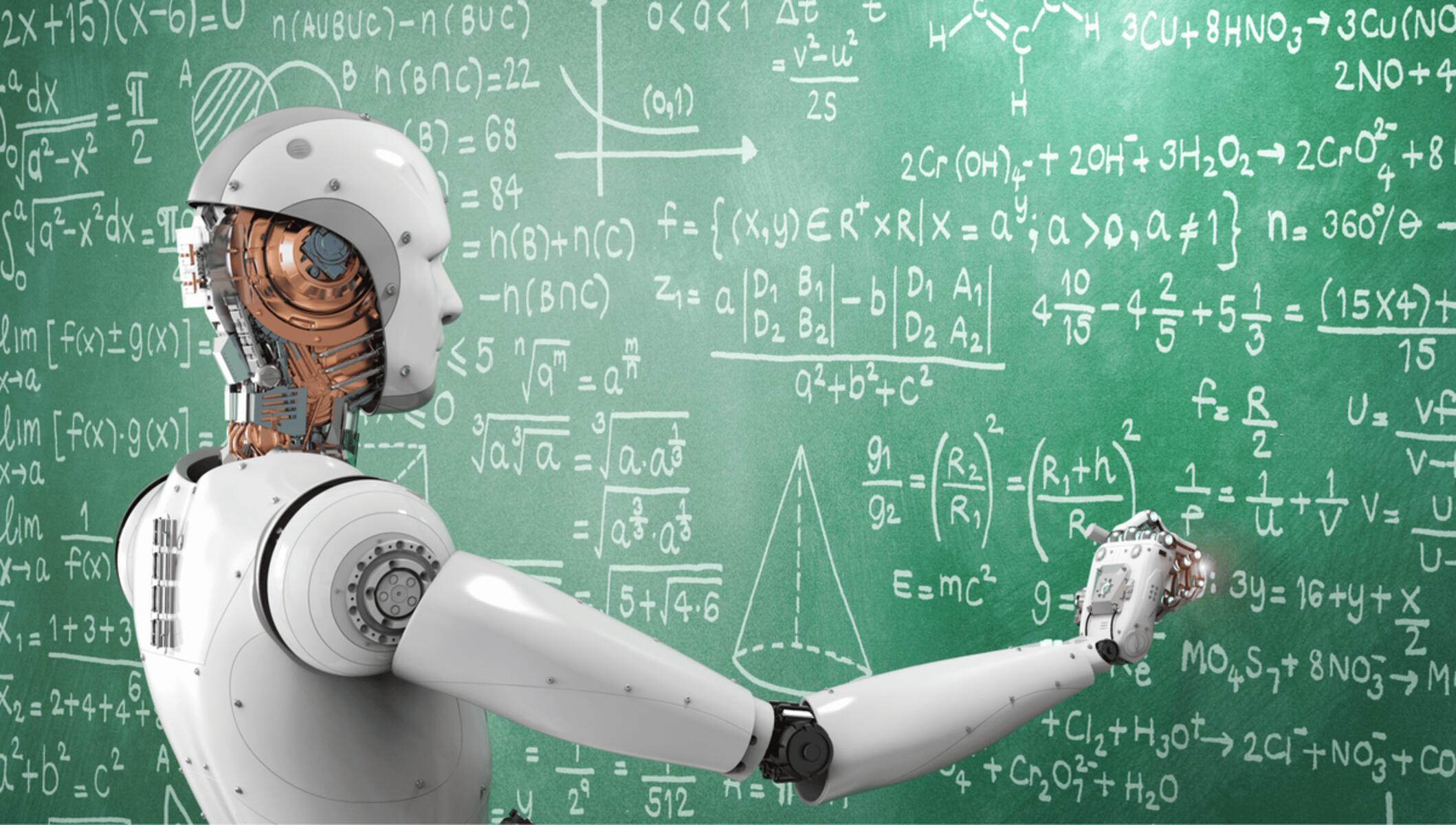Introduction
Machine learning has emerged as one of the most promising and influential technologies of the modern era. From self-driving cars to voice assistants, machine learning algorithms are transforming various industries and shaping the future. However, beneath the surface of these complex algorithms lies a strong foundation of mathematical concepts and principles.
In order to truly understand and apply machine learning effectively, it is crucial to have a solid understanding of the mathematical principles that underpin it. Many individuals may find themselves wondering, “What math do I need for machine learning?” In this article, we will explore the fundamental areas of mathematics that are essential for getting started in the field of machine learning.
While proficiency in mathematics is not the sole requirement for becoming a machine learning expert, it provides the necessary tools to comprehend and develop algorithms that can analyze, interpret, and predict patterns in large datasets. Whether you are a beginner or already have some experience in the field, having a strong foundation in certain mathematical concepts is crucial for mastering machine learning techniques.
In the following sections, we will delve into the specific areas of mathematics that form the backbone of machine learning. These areas include linear algebra, calculus, probability and statistics, optimization, algorithms and complexity theory. By understanding these mathematical concepts, you will be equipped with the tools to tackle various machine learning problems and develop innovative solutions.
It is important to note that while a solid understanding of these mathematical concepts is vital, it is equally important to contextualize them within the broader field of machine learning. Practical hands-on experience, experimentation, and understanding the nuances of different algorithms are also crucial to becoming a proficient machine learning practitioner. Nonetheless, the mathematical foundation helps to strengthen your understanding and enables you to grasp the underlying principles upon which machine learning algorithms are built.
In the upcoming sections, we will explore each of these mathematical areas in more depth, providing a comprehensive overview of the specific concepts and techniques that are relevant to machine learning. By the end of this article, you will have a better understanding of the fundamental math required to excel in the field of machine learning.
Basics of Mathematics in Machine Learning
Before diving into the specifics of each mathematical area, it is important to grasp the overarching role that mathematics plays in machine learning. Mathematics provides the framework and tools for understanding and modeling complex systems, enabling us to extract meaningful insights from data.
At its core, machine learning is about creating mathematical models that can learn and make predictions from data. These models are constructed using algorithms that are designed to find patterns, relationships, and trends within the data. By applying mathematical techniques, these algorithms can identify and generalize these patterns, allowing the model to make accurate predictions on new, unseen data points.
One of the key concepts in machine learning is the notion of optimization. Optimization involves finding the best possible solution to a problem within a given constraint. In the context of machine learning, this often involves minimizing a loss function, which quantifies the discrepancy between the predicted output of a model and the actual output. Optimization techniques, such as gradient descent, leverage calculus and linear algebra to iteratively update the model’s parameters and reduce the loss.
Probability and statistics also play a critical role in machine learning. These areas provide the tools for quantifying uncertainty, estimating probabilities, and making informed decisions based on available data. Statistical methods help in analyzing and interpreting data, assessing the significance of relationships, and determining the reliability of predictions made by machine learning models.
Additionally, understanding algorithms and complexity theory is essential in machine learning. Algorithms are the step-by-step procedures that guide the learning process and drive the predictive capabilities of the model. Complexity theory helps to assess the computational resources required by different algorithms and understand their efficiency and scalability in handling large datasets. By optimizing algorithms and considering their complexity, we can ensure efficient and scalable machine learning solutions.
In summary, mathematics provides the foundational principles and tools necessary for building and understanding machine learning models. It enables us to formulate and solve optimization problems, quantify uncertainty, make informed decisions, and assess the efficiency and scalability of algorithms. By harnessing the power of mathematics in machine learning, we can unlock the full potential of this transformative field.
Linear Algebra
Linear algebra forms the backbone of many machine learning algorithms. It deals with the study of vectors, matrices, and linear transformations, providing a powerful mathematical framework for representing and manipulating data.
In the context of machine learning, vectors are used to represent features or attributes of data points. For example, in a dataset of housing prices, a vector can represent the features such as the number of bedrooms, the square footage, and the location of a house. These vectors are often stacked together to form a matrix, where each row represents a data point and each column represents a feature.
Matrix operations play a key role in machine learning algorithms. Techniques such as matrix multiplication, matrix inverse, and matrix decomposition are used extensively to perform calculations and transformations on data points. For example, the dot product of two vectors can measure the similarity between them, while matrix decomposition techniques like singular value decomposition (SVD) can uncover underlying patterns and reduce the dimensionality of the data.
Linear algebra is also crucial for understanding and building models such as linear regression and support vector machines. These models rely on linear combinations of features and leverage concepts such as vector spaces and projections to find optimal solutions. By representing data and models as matrices and vectors, we can apply linear algebra techniques to solve optimization problems and make predictions.
Furthermore, eigenvectors and eigenvalues are important concepts in linear algebra that have applications in machine learning. These concepts help in understanding the axes of variability within data and extracting meaningful features. Techniques like principal component analysis (PCA) leverage eigenvectors to reduce the dimensionality of the data, retaining the most important information while discarding redundant or noisy features.
In summary, linear algebra is a fundamental mathematical field in machine learning. Its concepts and techniques allow us to represent and manipulate data efficiently, perform calculations and transformations on data points, and build models that can make accurate predictions. By understanding and utilizing linear algebra, we can unlock the full potential of machine learning algorithms and derive meaningful insights from complex datasets.
Calculus
Calculus is another essential branch of mathematics that plays a significant role in machine learning. It provides a framework for understanding how functions change and allows us to optimize models and algorithms to make accurate predictions.
One of the fundamental concepts in calculus is differentiation. Differentiation involves finding the rate at which a function changes at a particular point. In machine learning, this concept is crucial for optimizing models by determining the direction and magnitude of parameter updates. Techniques like gradient descent use differentiation to iteratively update the model’s parameters in the direction of steepest descent, ultimately minimizing the loss function and improving the accuracy of predictions.
Integrals, the reverse process of differentiation, are also essential in machine learning. Integrals help us calculate the total accumulation of quantities over a given range. They are useful in various machine learning applications, such as estimating probability distributions, computing areas under curves, and evaluating the expected value of a random variable. Techniques like Bayesian inference rely on integrals to update prior beliefs based on observed data and make predictions.
Calculus also enables us to analyze the behavior of functions and understand their limits and continuity. This knowledge is crucial for evaluating the performance and stability of machine learning algorithms. By understanding the limits and convergence of functions, we can assess the robustness and reliability of models in different scenarios.
The concepts of calculus are particularly relevant in deep learning, a subset of machine learning that focuses on neural networks with multiple layers. The backpropagation algorithm, which is used to train deep neural networks, relies on calculus to calculate gradients and fine-tune the weights and biases of the network. Understanding the principles of calculus is crucial for developing and optimizing deep learning models.
In summary, calculus provides the mathematical tools for optimizing models, understanding the behavior of functions, and making accurate predictions in machine learning. By applying concepts such as differentiation and integration, we can fine-tune models, analyze the convergence of algorithms, and build sophisticated deep learning architectures. Familiarity with calculus is essential for mastering the art of machine learning and leveraging its full potential.
Probability and Statistics
Probability and statistics are indispensable tools in machine learning, allowing us to quantify uncertainty, estimate probabilities, and make informed decisions based on data. These fields provide the mathematical framework for analyzing and interpreting data, assessing the significance of relationships, and evaluating the performance of machine learning models.
Probability theory is the foundation upon which statistics is built. It deals with the study of random events and their likelihood of occurrence. In machine learning, probability theory helps in modeling and understanding the inherent uncertainty in data and predictions. By assigning probabilities to different outcomes, we can make probabilistic predictions and assess the confidence of our predictions.
Statistical methods help us draw meaningful inferences from data and make sound decisions. They provide tools for analyzing the characteristics of datasets, identifying patterns and dependencies, and estimating population parameters based on sample data. Techniques such as hypothesis testing, regression analysis, and Bayesian inference are widely used in machine learning to validate assumptions, assess model performance, and make predictions.
The concept of statistical distributions is also fundamental in machine learning. Distributions represent the probability of different outcomes for a given random variable. Familiarity with distributions like the normal distribution, binomial distribution, and exponential distribution is essential for modeling data and understanding the probabilistic nature of machine learning algorithms.
Additionally, understanding statistical measures such as mean, variance, and standard deviation is crucial in machine learning. These measures provide insights into the central tendency, spread, and variability of data. They allow us to summarize and compare datasets, identify outliers, and evaluate the performance of models.
In machine learning, it is important to have a good understanding of statistical concepts like sampling, bias, and variance. These concepts help in designing experiments, selecting appropriate training and test datasets, and managing the trade-off between model complexity and generalization.
In summary, probability and statistics are essential in machine learning for quantifying uncertainty, estimating probabilities, and making informed decisions. By leveraging these mathematical tools, we can analyze data, validate assumptions, and build reliable machine learning models. Familiarity with probability theory and statistical methods is crucial for anyone working in the field of machine learning.
Optimization
Optimization is a critical component of machine learning, focused on finding the best possible solution to a problem within a given set of constraints. In machine learning, optimization techniques are used to fine-tune models, minimize error, and maximize performance.
One of the key optimization techniques employed in machine learning is gradient descent. It is an iterative algorithm that adjusts the parameters of a model by following the direction of the steepest descent of a loss function. Gradient descent allows models to update their weights and biases in order to minimize the difference between predicted and actual outputs. By iteratively fine-tuning the parameters, models can converge towards an optimal solution and improve their performance.
Different variants of gradient descent exist, such as stochastic gradient descent and mini-batch gradient descent, which provide efficient strategies for optimizing models on large datasets. These techniques enable the algorithm to update the model parameters based on randomly selected subsets of the data, reducing computational requirements and enhancing training efficiency.
In addition to gradient descent, other optimization algorithms, such as genetic algorithms, particle swarm optimization, and simulated annealing, can be utilized in machine learning. These algorithms mimic the behaviors of natural systems and are particularly useful in optimizing complex models or solving problems with numerous possible solutions. They provide alternative approaches to traditional gradient-based methods and can overcome local optima in search of better solutions.
It is also important to consider the concept of overfitting in optimization. Overfitting occurs when a model becomes very specific to the training data and fails to generalize well to new, unseen data. Regularization techniques, such as L1 and L2 regularization, help to prevent overfitting by introducing penalties for overly complex models. These techniques strike a balance between accuracy on the training data and the model’s ability to generalize to new data points.
Efficient optimization techniques are crucial for scaling machine learning algorithms to handle massive datasets. As datasets grow larger, traditional optimization algorithms may become computationally expensive or infeasible. However, with advancements in distributed computing and parallel processing, distributed optimization algorithms, such as parallel gradient descent and stochastic gradient descent, can be employed to improve training efficiency and speed up the learning process.
In summary, optimization plays a vital role in machine learning by allowing models to fine-tune their parameters, minimize error, and maximize performance. Techniques such as gradient descent, regularization, and distributed optimization enable us to optimize models on large datasets and overcome the challenges posed by complex problems. By employing efficient optimization strategies, machine learning algorithms can achieve higher levels of accuracy and make more reliable predictions.
Algorithms and Complexity Theory
Algorithms and complexity theory are vital components of machine learning, providing a systematic approach to problem-solving and assessing the computational efficiency of solutions. Understanding these concepts is essential for developing and optimizing machine learning models.
Algorithms are step-by-step procedures used to solve specific problems. In machine learning, algorithms are utilized to extract meaningful insights from data, build predictive models, and make informed decisions. There are various types of algorithms, such as classification algorithms, clustering algorithms, and reinforcement learning algorithms, each designed to tackle specific tasks and optimize different objectives.
Complexity theory, on the other hand, focuses on analyzing the efficiency and scalability of algorithms. It provides a framework for measuring the resources required by an algorithm as the input size increases. This analysis helps identify algorithms that offer the best trade-off between computational resources and performance. Big O notation is often used to describe the time and space complexity of algorithms, allowing us to assess their efficiency and make informed decisions about their implementation.
Understanding the complexity of different algorithms is critical in machine learning, especially when dealing with large datasets. Machine learning models can be computationally demanding, and selecting the most efficient algorithm for a specific problem can significantly impact the overall performance.
Additionally, knowing the complexity of different machine learning algorithms can guide us in selecting the appropriate techniques for handling larger datasets or real-time applications. For instance, if we are working with massive amounts of data, algorithms with lower time complexity might be preferred to ensure faster training and prediction times. On the other hand, for problems with strict memory limitations, algorithms with lower space complexity can be more suitable.
Moreover, complexity theory also helps in understanding the limitations and capabilities of different algorithms. Certain problems may belong to complexity classes that have inherent computational limitations, such as being NP-hard. Recognizing these limitations can guide us in adapting our approaches, designing approximation algorithms, or leveraging heuristics to tackle complex problems.
In summary, algorithms and complexity theory are fundamental in machine learning as they provide the tools for developing efficient solutions and understanding the computational resources required by different algorithms. By selecting the appropriate algorithms and optimizing them based on complexity analysis, we can build more effective machine learning models that can handle large datasets, deliver faster results, and solve complex problems more efficiently.
Conclusion
In conclusion, a strong foundation in mathematics is essential for success in the field of machine learning. The key areas of mathematics – linear algebra, calculus, probability and statistics, optimization, and algorithms and complexity theory – provide the building blocks for understanding and developing machine learning models.
Linear algebra allows us to represent and manipulate data efficiently, perform calculations on data points, and build models that can make accurate predictions. Calculus helps us optimize models, understand the behavior of functions, and make informed decisions based on data. Probability and statistics enable us to quantify uncertainty, estimate probabilities, and analyze data to make meaningful inferences. Optimization techniques allow us to fine-tune models, minimize error, and maximize performance. Finally, algorithms and complexity theory provide a systematic approach to problem-solving and guide us in selecting and optimizing algorithms for different tasks.
It is important to note that while a solid understanding of these mathematical concepts is crucial, it is equally important to gain practical experience and develop a deep understanding of machine learning algorithms and techniques. Hands-on experience, experimentation, and keeping up with the latest advancements in the field are also key to becoming a proficient machine learning practitioner.
By leveraging the power of mathematics in machine learning, we can unlock the full potential of this transformative field. Whether you are a beginner or an experienced professional, continuously strengthening your math skills will contribute to your success in this rapidly evolving field.
So, if you are pursuing a career in machine learning or seeking to deepen your knowledge in this field, embrace the mathematical foundations discussed in this article. Cultivating a strong foundation in mathematics will enable you to grasp the underlying principles of machine learning algorithms, develop innovative solutions, and drive forward the advancement of this exciting and ever-growing field.

























